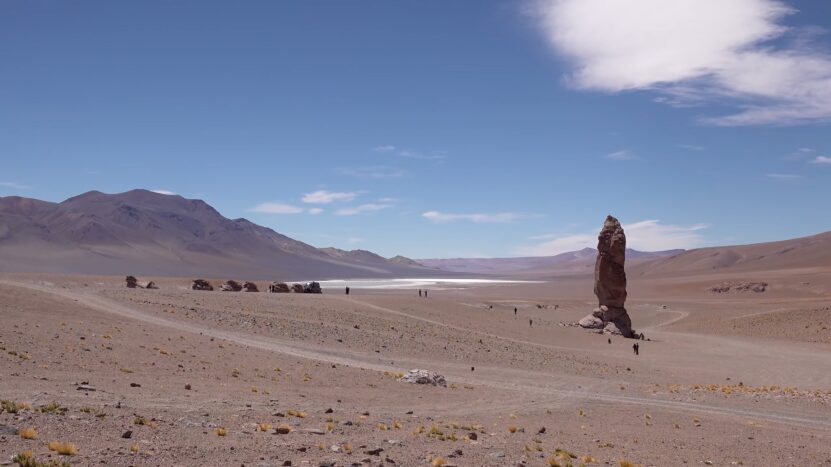The Atacama Desert, or “Desierto de Atacama” in Spanish, is a vast plateau located in South America. This 1,000-kilometer (600-mile) stretch of land lies along the Pacific coast, to the west of the Andes Mountains.
Covering an area of approximately 105,000 square kilometers (41,000 square miles), or 128,000 square kilometers (49,000 square miles) when including the barren lower slopes of the Andes, the Atacama Desert is primarily composed of rocky terrain, salt lakes (salares), sand, and felsic lava that flows toward the Andes.
Here are 7 interesting facts about the Atacama Desert:
The driest desert on Earth
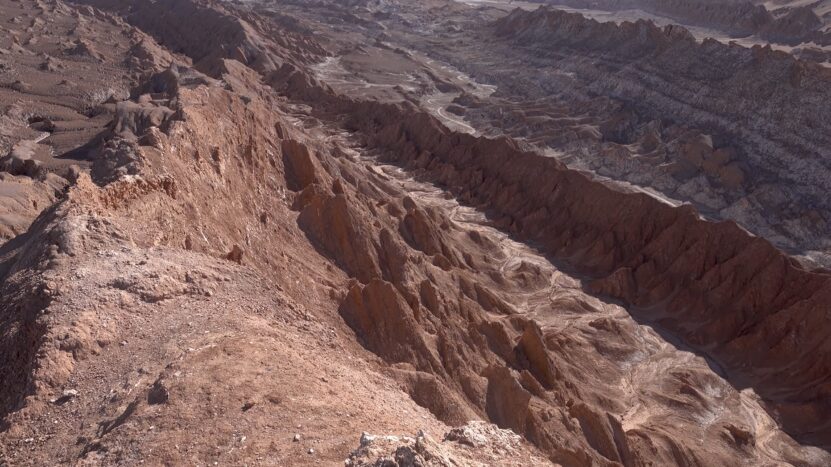
The Atacama Desert, located in Chile, is widely recognized as the driest desert on Earth, a distinction confirmed by NASA research and endorsed by National Geographic. This extreme aridity is primarily due to its unique geographical position, nestled between the Andes Mountains to the east and the Pacific Ocean to the west. These natural barriers prevent moisture from reaching the desert, creating a rain shadow effect.
Some parts of the Atacama Desert have not seen any significant rainfall for hundreds of years. The average annual precipitation in the region is less than 1 millimeter (0.04 inches), with some areas receiving virtually no rainfall at all. This extreme dryness makes the Atacama Desert an incredibly harsh environment, where only a few hardy plant and animal species can survive.
Interestingly, the Atacama Desert’s Mars-like landscape and extreme conditions have made it an ideal location for scientific research. Its soil composition and lack of organic material bear a striking resemblance to Martian soil, prompting NASA to use the desert for testing Mars rovers and other equipment. Moreover, the Atacama’s clear skies and high altitude have made it a prime location for astronomical observatories, as the lack of moisture and light pollution allow for unparalleled stargazing opportunities.
50 times drier than Death Valley
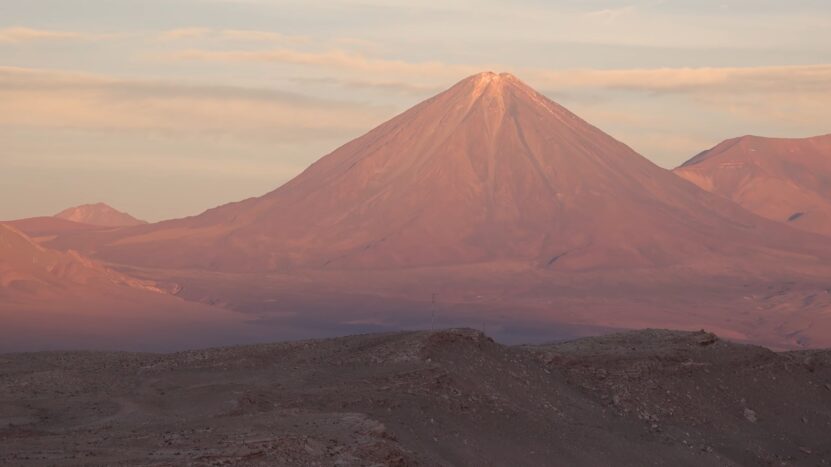
The Atacama Desert in Chile is astonishingly over 50 times drier than Death Valley, located in California. Spanning more than 40,600 square miles, the Atacama Desert consists predominantly of salt basins, lava flows, and sand.
This stark difference in aridity can be attributed to the unique geographic conditions of the Atacama Desert, which is situated between the Andes Mountains and the Pacific Ocean. These natural barriers block moisture from reaching the area, resulting in an extremely dry environment.
Death Valley, while also known for its harsh and arid conditions, does receive more rainfall than the Atacama Desert. The average annual precipitation in Death Valley is approximately 2.36 inches, while some parts of the Atacama receive less than 0.04 inches per year, and others experience virtually no rainfall at all.
The contrast between the Atacama Desert and Death Valley highlights the exceptional nature of the Atacama’s environment and the extreme conditions that make it the driest desert on Earth.
Nearly devoid of rainfall
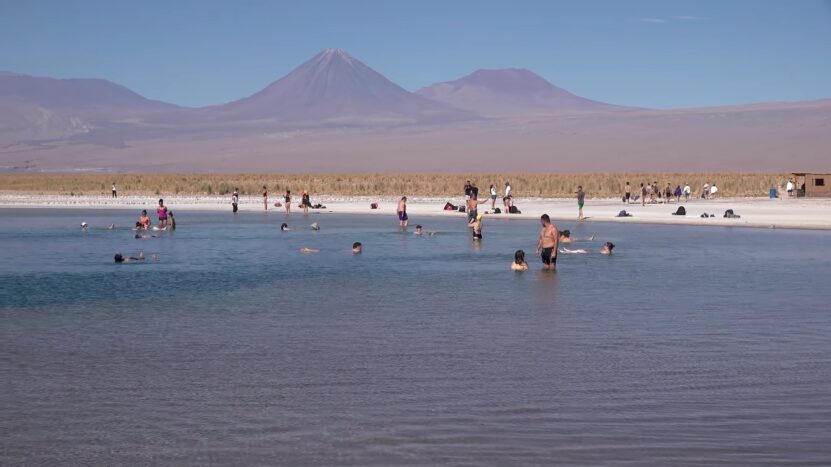
The Atacama Desert receives an astonishingly low average rainfall of just one millimeter per year. In fact, some weather stations within the desert have never recorded any precipitation at all. The extreme aridity of the region is so severe that even mountain peaks soaring over 6,500 meters high remain devoid of glaciers.
This lack of rainfall is primarily due to the desert’s location between the Andes Mountains and the Pacific Ocean, which effectively blocks moisture from reaching the area. This rain shadow effect contributes to the Atacama Desert’s status as the driest place on Earth.
The absence of glaciers on high-altitude peaks in the Atacama Desert is a testament to the severity of the dry climate. Glaciers typically form at high elevations where temperatures are low enough for snow to accumulate and transform into ice. However, in the Atacama Desert, the lack of moisture and precipitation prevents this process from occurring, leaving even the tallest peaks without any glacial formations.
Sterile soil
Soil is largely infertile due to its extreme aridity, which is a result of the desert’s unique geographic position. Surrounded by the Andes Mountains on one side and the Chilean Coast Range on the other, the Atacama Desert is effectively blocked from receiving moisture from both the east and the west. These natural barriers create a rain shadow effect that deprives the region of the moisture necessary for plant growth and soil fertility.
This lack of moisture, combined with the desert’s predominantly rocky terrain, salt basins, and sand, contributes to the barrenness of the Atacama Desert’s soil. Consequently, the region supports only a limited number of plant and animal species that have adapted to the extreme conditions. The sterile soil of the Atacama Desert is not only a testament to its status as the driest place on Earth but also offers unique research opportunities for scientists studying Mars-like environments and the limits of life on our planet.
Home to the largest reserves of Sodium Nitrate
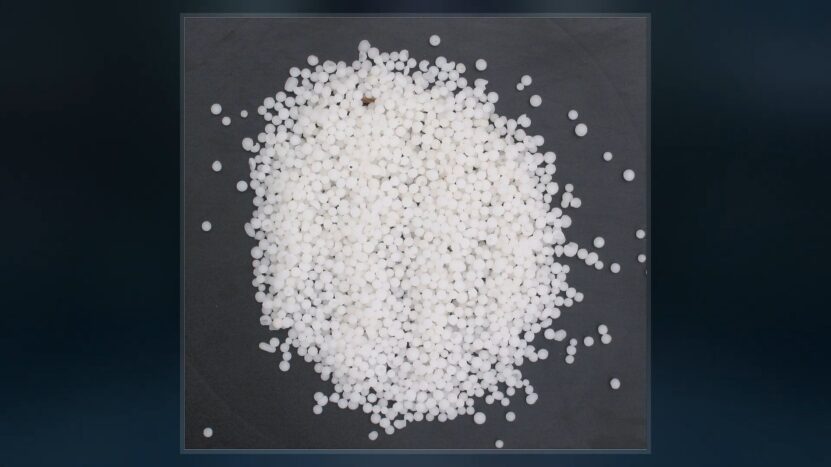
One fascinating aspect of the Atacama Desert is that it holds the world’s largest natural supply of sodium nitrate. This chemical compound, also known as “white gold,” was extensively mined during the early 20th century, particularly in the 1940s. Sodium nitrate was a valuable resource, used in the production of fertilizers, explosives, and various industrial processes.
Due to the high demand for sodium nitrate during this period, numerous mining towns sprang up across the Atacama Desert. However, the invention of synthetic alternatives to sodium nitrate led to a decline in demand for the natural resource, causing many mining operations to cease. As a result, the desert is now dotted with numerous abandoned mining towns, which stand as a testament to the once-thriving industry.
These ghost towns, along with the rich history of sodium nitrate mining in the Atacama Desert, offer a unique insight into the economic and social impacts of natural resource extraction and its subsequent decline.
Mars like soil
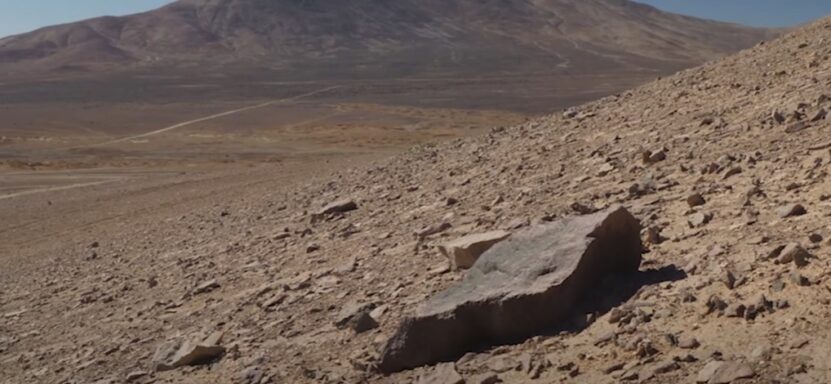
The soil in the Atacama Desert shares striking similarities with Martian soil samples, making it an invaluable location for scientists studying the Red Planet. Due to these similarities, NASA uses the Atacama Desert as a testing ground for Mars instruments and equipment for future missions to Mars. The desert’s extreme conditions and barren landscape closely resemble the Martian environment, providing a unique opportunity for researchers to study and test various technologies on Earth before deploying them to Mars.
In addition to instrument testing, the Atacama Desert is also the site of the NASA Earth-Mars Cave Detection Program. This initiative focuses on detecting and studying caves on both Earth and Mars, as caves may potentially harbor life and provide valuable insights into the history of water and other geological processes on both planets. The Atacama Desert’s Mars-like soil, along with its unique geological features, makes it an ideal location for this innovative research program and an invaluable resource for the scientific community.

